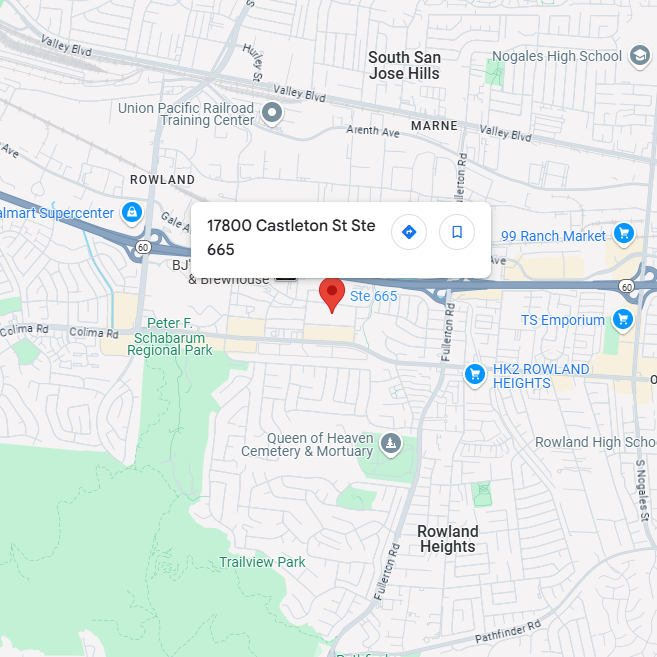EDITGENE CO., LTD

17800 Castleton St. Ste 665. City of Industry. CA 91748

info@editxor.com

+1-833-226-3234 (USA Toll-free)
+1-224-345-1927 (USA)
+86-19120102676 (Intl)

Technical Support

Support Center
Beijing Time: Monday to Friday, 8:00 AM - 6:00 PM
Toll-Free (USA): +833-226-3234
Direct Line (USA): +1-224-345-1927
Email: techsupport@editxor.com

After-Hours Support
Beijing Time: Monday to Sunday, 8:00AM - 6:00 PM
International Line: +86-19120102676
Email: info@editxor.com

Facebook Messenger
Reach out to us on Facebook Messenger for personalized assistance and detailed information.

Linkedin
Engage with us on LinkedIn for professional inquiries, the latest blogs, discoveries, and updates on our innovative work.
FAQ
Why choose EDITGENE, and what are EDITGENE’s main advantages in gene knock-in technology?
EDITGENE’s advantages in gene knock-in technology include:
Guaranteed results: With 10 years of CRISPR gene editing experience and a team of PhDs from world-renowned institutions offering one-on-one support.
High precision: EDITGENE’s optimized tools reduce off-target effects, enhancing editing accuracy.
High efficiency: EDITGENE’s technology platform improves knock-in success rates, accelerating experimental progress.
Customized service: Tailored knock-in solutions to meet specific research or therapeutic goals.
Why conduct gene overexpression?
Gene overexpression aids in studying the function of specific genes, revealing their role within the organism. It is also commonly used in drug screening, vaccine development, and protein production. For example, by overexpressing a therapeutic protein, researchers can evaluate its efficacy in disease models.
What is gene overexpression?
Gene overexpression refers to using various techniques to significantly increase the expression level of a specific gene in cells or organisms. This is often achieved by introducing additional gene copies or using strong promoters to drive gene expression.
Why choose EDITGENE to establish stable overexpression cell lines?
EDITGENE brings 10 years of CRISPR-based cell editing experience and offers one-on-one support from a team of PhDs from globally recognized institutions.
What is the difference between a stable cell line and a transient cell line?
The main difference lies in the duration and stability of gene expression:
Transient cell line – The target gene is expressed temporarily in cells, typically lasting hours to days, and is suitable for short-term experiments.
Stable cell line – The target gene is stably integrated into the cell genome, allowing long-term expression, suitable for extended research and production.
What is monoclonal screening, and why is it so important in gene editing research?
Monoclonal screening is the process of isolating a single clone from a mixed pool of cells and expanding that clone into a cell line. Monoclonal screening ensures that the cell lines used originate from a single cell, guaranteeing a high degree of genetic background consistency. After cells are gene-edited or genetically modified, the genetic background differences among the cells in the initial cell pool can be significant, making subsequent experimental results inaccurate. By using monoclonal screening, researchers can obtain cell populations with consistent genetic backgrounds and stable gene edits, allowing for stable and accurate monitoring of phenotypic changes.
What unique advantages does EDITGENE offer for monoclonal screening services?
EDITGENE utilizes industry-leading 3D single-cell printing technology, which enables precise isolation and positioning of individual cells, significantly increasing the success rate and efficiency of monoclonal screening. This technology is widely applied in biomedicine research, antibody development, drug screening, and therapeutic selection, showcasing broad application prospects in cell research.
How does EDITGENE ensure the purity and stability of cells during monoclonal screening?
EDITGENE’s 3D single-cell printing technology employs non-contact operation, avoiding mechanical damage and background contamination, which helps maintain cell integrity and biological activity. This technology also minimizes human error in the traditional limited dilution method of monoclonal selection, ensuring the reliability of screening results.
How do I choose suitable cells for library screening?
Cell selection can follow these principles:
1.It should align with the research objectives.
2.The genes targeted by the sgRNA library should correspond to the cell's lineage.
3.The cells should be capable of stable passaging.
4.The transfection efficiency should be high.
5.Avoid primary cells whenever possible. Primary cells cannot be stably passaged and may experience significant cell death during the library screening process, which can hinder experiment completion. If primary cells must be used for library screening, mitigating this risk can be achieved by lowering cell coverage and choosing a library with fewer gRNAs to minimize the cell pool size and shorten the experimental duration.
1.It should align with the research objectives.
2.The genes targeted by the sgRNA library should correspond to the cell's lineage.
3.The cells should be capable of stable passaging.
4.The transfection efficiency should be high.
5.Avoid primary cells whenever possible. Primary cells cannot be stably passaged and may experience significant cell death during the library screening process, which can hinder experiment completion. If primary cells must be used for library screening, mitigating this risk can be achieved by lowering cell coverage and choosing a library with fewer gRNAs to minimize the cell pool size and shorten the experimental duration.
What is the difference between a single-plasmid system and a dual-plasmid system for library vectors?
What is the difference between a single-plasmid system and a dual-plasmid system for library vectors?
A single-plasmid system can achieve gene editing with one transfection, making construction relatively simple, but the larger plasmid size can lead to lower infection efficiency. In a dual-plasmid system, two vectors are used, each carrying either the Cas9 or sgRNA expression cassette. A stable Cas9 cell line is first constructed, and then the sgRNA library is transfected into this cell line. This approach has several advantages:
1.Increased Editing Efficiency: The independent and stable expression of Cas9 protein and sgRNA on different vectors enhances editing efficiency.
2.Flexibility: Vectors can be designed and constructed flexibly based on experimental needs, such as loading two sgRNA expression cassettes into one vector.
3.Increased Viral Titer: By splitting into two plasmids, the load on each plasmid is reduced, facilitating viral packaging and increasing yield and titer.
4.Increased Stability: Independently constructing a stable Cas9 cell line ensures that the Cas9 expression levels and editing efficiency in each cell are approximately the same, enhancing experimental accuracy.
1.Increased Editing Efficiency: The independent and stable expression of Cas9 protein and sgRNA on different vectors enhances editing efficiency.
2.Flexibility: Vectors can be designed and constructed flexibly based on experimental needs, such as loading two sgRNA expression cassettes into one vector.
3.Increased Viral Titer: By splitting into two plasmids, the load on each plasmid is reduced, facilitating viral packaging and increasing yield and titer.
4.Increased Stability: Independently constructing a stable Cas9 cell line ensures that the Cas9 expression levels and editing efficiency in each cell are approximately the same, enhancing experimental accuracy.
What issues should be considered when culturing cells for gene delivery?
Maintaining the activity of cell cultures is crucial. Cells should not be allowed to reach confluence for more than 24 hours. Frozen new cells can restore transfection activity. The optimal cell plating density varies for different cell types or applications; however, for adherent cells, a confluence of 70% to 90% or a density of 5×10^5 to 2×10^6 suspended cells/ml typically yields good transfection results. It is important to ensure that cells are not fully confluent or in a fixed phase during transfection.
Can both dsDNA and ssDNA targets activate the trans-cleaving activity of Cas12a? Which has higher efficiency?
Both double-stranded DNA (dsDNA) and single-stranded DNA (ssDNA) targets can activate the trans-cleaving activity (also known as collateral cleavage) of Cas12a, similar to Cas12b. However, the efficiency differs: ssDNA targets activate Cas12b trans-cleaving activity more efficiently than dsDNA targets, while dsDNA targets activate Cas12a trans-cleaving activity more efficiently than ssDNA targets.
How long can CRISPR-related reagents and Cas proteins be stored?
CRISPR detection reagents:
1.The RPA isothermal amplification kit can be stored at -20°C for long-term storage.
2.Target plasmids can be stored at -20°C for long-term use.
3.Cas proteins are sensitive to repeated freeze-thaw cycles; it is recommended to aliquot into multiple tubes and store at -80°C, retrieving them as needed for experiments. For short-term use, they can be stored at -20°C.
4.crRNA is prone to degradation and should be stored at -80°C if not used in the short term.
5. Probes, being double-stranded DNA, are relatively stable and can be stored at -20°C.
1.The RPA isothermal amplification kit can be stored at -20°C for long-term storage.
2.Target plasmids can be stored at -20°C for long-term use.
3.Cas proteins are sensitive to repeated freeze-thaw cycles; it is recommended to aliquot into multiple tubes and store at -80°C, retrieving them as needed for experiments. For short-term use, they can be stored at -20°C.
4.crRNA is prone to degradation and should be stored at -80°C if not used in the short term.
5. Probes, being double-stranded DNA, are relatively stable and can be stored at -20°C.
How to Improve the Detection Sensitivity of Cas Enzymes?
1.Design an efficient crRNA sequence. Proper design and structure prediction using online resources can help select suitable crRNA to achieve good trans-cleavage activity of the Cas enzyme.
2.Choose an appropriate signal reporter substrate. Research indicates that using a 15 nt single-stranded DNA (ssDNA) as a reporter substrate maximizes the cleavage reaction rate of Cas12a, significantly enhancing the reaction rate compared to the commonly used 5-nt ssDNA.
3.Optimize reaction conditions and buffers. Adjusting the CRISPR reaction parameters, such as the ratio of Cas enzyme to crRNA, the concentration of the Cas enzyme, and the reaction temperature, can improve detection performance to some extent.
2.Choose an appropriate signal reporter substrate. Research indicates that using a 15 nt single-stranded DNA (ssDNA) as a reporter substrate maximizes the cleavage reaction rate of Cas12a, significantly enhancing the reaction rate compared to the commonly used 5-nt ssDNA.
3.Optimize reaction conditions and buffers. Adjusting the CRISPR reaction parameters, such as the ratio of Cas enzyme to crRNA, the concentration of the Cas enzyme, and the reaction temperature, can improve detection performance to some extent.
How to Design crRNA?
1.The design process can follow these steps:
1.Identify the target gene sequence.
2.Specify the Cas protein being used. Different Cas proteins require corresponding PAM (Protospacer Adjacent Motif) sequences; for instance, Cas12a needs the "TTTV" PAM sequence for target recognition.
3.Select the crRNA targeting region. Choose a 20 nt nucleotide sequence on the target gene that is adjacent to the PAM site and pairs with the complementary strand of the crRNA.
4.Combine the selected 20 nt target sequence (variable part) with the scaffold sequence (fixed part) to design the crRNA sequence.
5.Use online tools such as CRISPR design tools (e.g., CRISPOR, Benchling, etc.) to assist in designing crRNA. These tools can predict the efficiency and specificity of the sgRNA, helping to avoid potential off-target effects.
6.After completing the design, the synthetic crRNA sequence can be ordered from a synthetic biology company.
1.Identify the target gene sequence.
2.Specify the Cas protein being used. Different Cas proteins require corresponding PAM (Protospacer Adjacent Motif) sequences; for instance, Cas12a needs the "TTTV" PAM sequence for target recognition.
3.Select the crRNA targeting region. Choose a 20 nt nucleotide sequence on the target gene that is adjacent to the PAM site and pairs with the complementary strand of the crRNA.
4.Combine the selected 20 nt target sequence (variable part) with the scaffold sequence (fixed part) to design the crRNA sequence.
5.Use online tools such as CRISPR design tools (e.g., CRISPOR, Benchling, etc.) to assist in designing crRNA. These tools can predict the efficiency and specificity of the sgRNA, helping to avoid potential off-target effects.
6.After completing the design, the synthetic crRNA sequence can be ordered from a synthetic biology company.





 Room 501, Building D, International Business Incubator, No.3 Juquan Road, Science City, Huangpu District, Guangzhou, Guangdong, China 510663
Room 501, Building D, International Business Incubator, No.3 Juquan Road, Science City, Huangpu District, Guangzhou, Guangdong, China 510663
